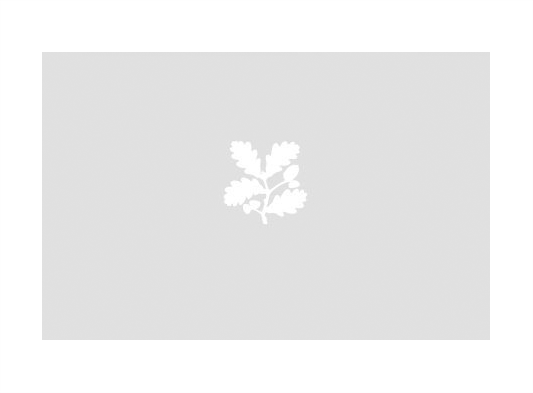Bureau Mazarin
manner of André-Charles Boulle the Elder (1642 - 1732)
Category
Furniture
Date
circa 1700
Materials
Brass, tortoiseshell, deal carcase, walnut drawer linings, cast brass mounts
Measurements
80 cm (H); 131 cm (W); 74.5 cm (D)
Place of origin
Paris
Collection
Beningbrough Hall, North Yorkshire
NT 1190865
Summary
A brass inlaid and brass mounted tortoiseshell bureau a Mazarin, in the manner of André-Charles Boulle (1642-1732) Paris, circa 1700. The rectangular top with brass mounted edge and inlaid with a pierced brass panel profusely decorated with arabesque designs incorporating mythical creatures and hunting scenes. The desk with an arrangement of nine drawers, raised on square section tapered legs with brass square caps and tied by twin X stretchers terminating on brass bun feet. The sides panelled and inlaid with conforming 'Boulle' decoration. Fitted with later Bramah patent locks, some restoration.
Full description
André-Charles Boulle (Paris, 1642 - 1732) was a French ébéniste who is generally considered to be the pre-eminent artist in the field of marquetry, his fame led to his name being given to the fashion he perfected of inlaying brass and tortoiseshell. In 1672, Boulle rose from master cabinetmaker to ébéniste du roi (royal cabinetmaker and sculptor) to King Louis XIV, that same year, the king granted him the royal privilege of setting his workshop and bronze foundry in the Palais du Louvre. This position allowed Boulle to produce furniture as well as works in gilt bronze, such as chandeliers, wall lights, and mounts for furniture. Although strict guild rules usually prevented craftsmen from practicing two professions simultaneously, Boulle's favored position allowed him protected status and exempted him from these statutes. The furniture by Boulle's workshop was never signed and as a result, many of the pieces can only be attributed.See: Jean Nérée Ronfort (ed.), 'André Charles Boulle, 1642-1732 : Un nouveau style pour l’Europe' Frankfurt 2009 for Boulle's work and further discussion. (James Weedon 2019)
Provenance
Likely to have previously been at Holme Lacy, the inherited Scudamore house sold by the 10th Earl of Chesterfield in 1910. Some items were apparently bought from the auction by Lady Chesterfield's mother and agents working on her behalf (or possibly purchased back later) as they reappeared at Beningbrough which was purchased by Lady Chesterfield in 1917. This desk can be seen in a 1927 Country Life photograph of the saloon at Beningbrough. After Lady Chesterfield's death, the desk was amongst a small number of items purchased from the 1958 auction for transfer to the National Trust along with the house (accepted in lieu) by the Ministry of Works (lot 647). Documented in auction catalogue and in the Ministry of Works 'Schedule of objects given to the National Trust for preservation at Beningbrough Hall'.
Makers and roles
manner of André-Charles Boulle the Elder (1642 - 1732), ébéniste
References
Ronfort 2009: Jean Nérée Ronfort (ed.), André Charles Boulle, 1642-1732 : Un nouveau style pour l’Europe (ex. cat.), Frankfurt 2009
